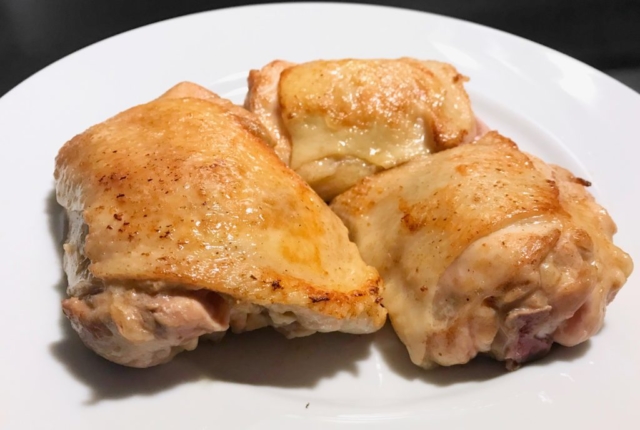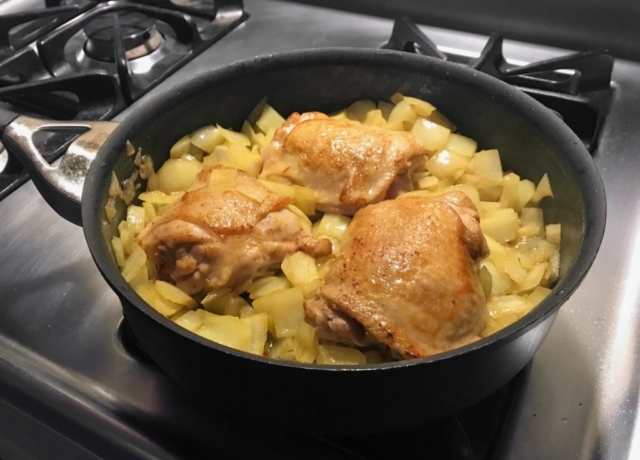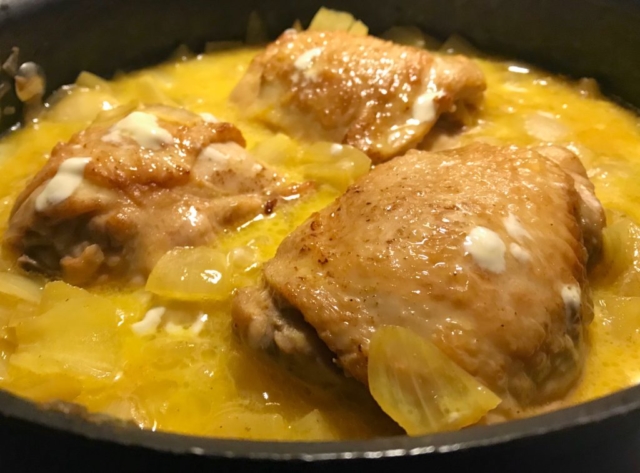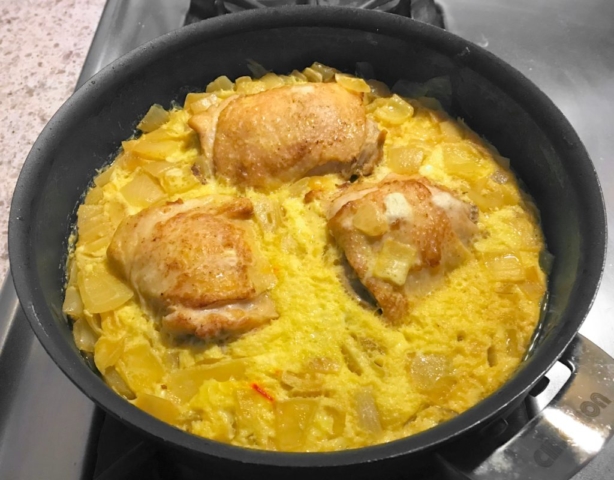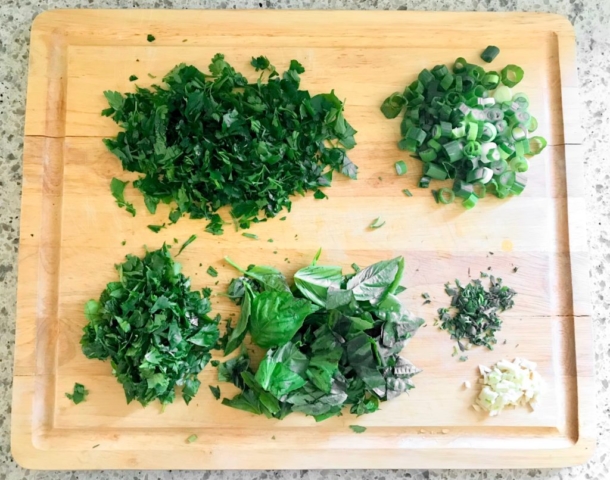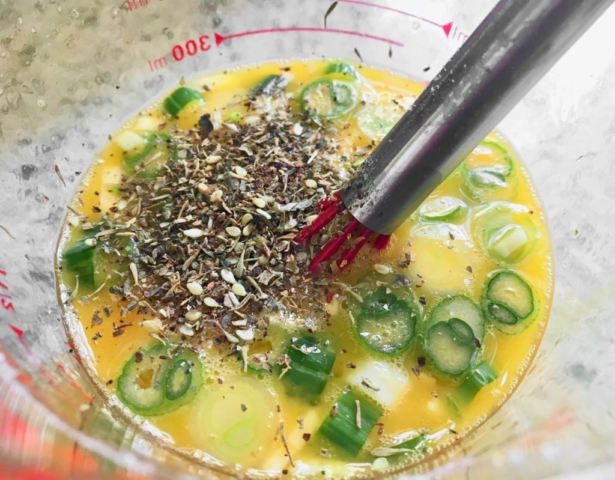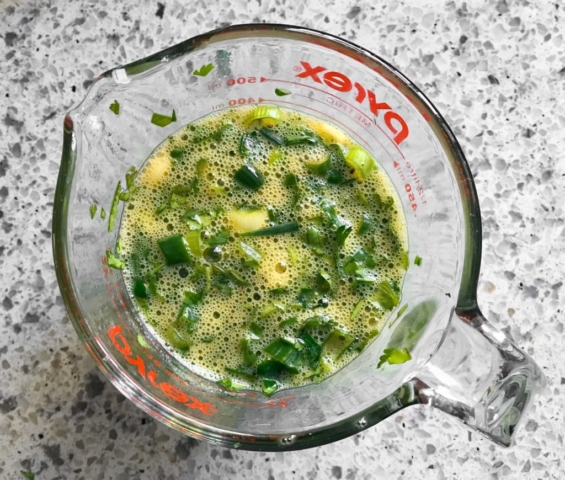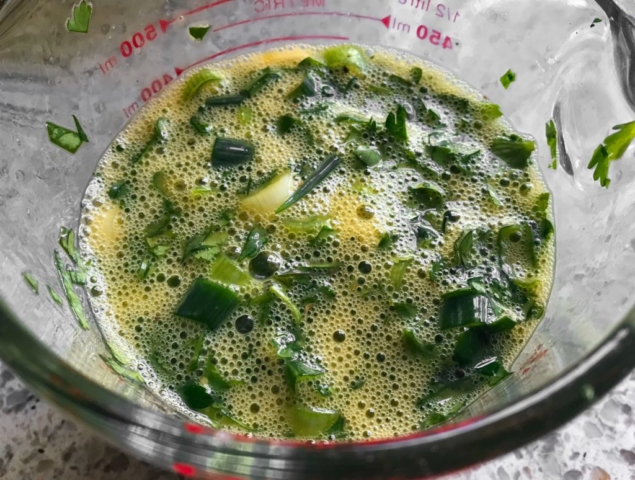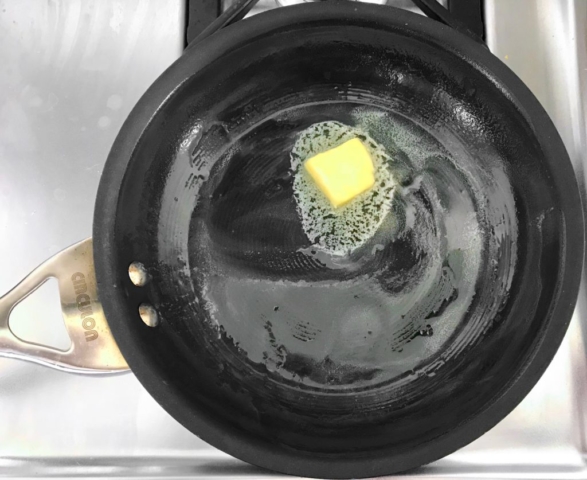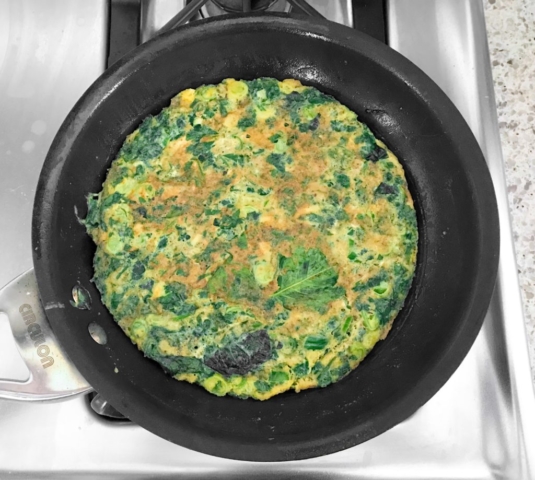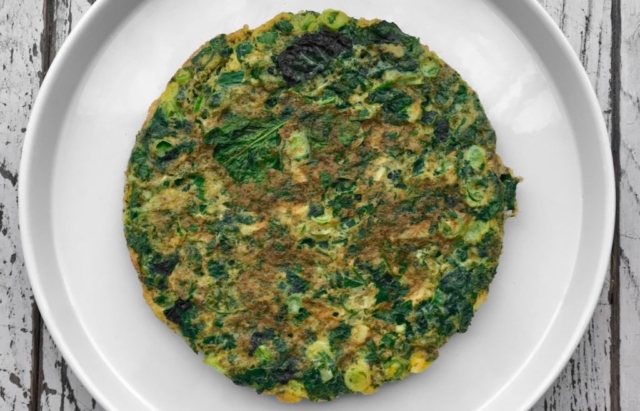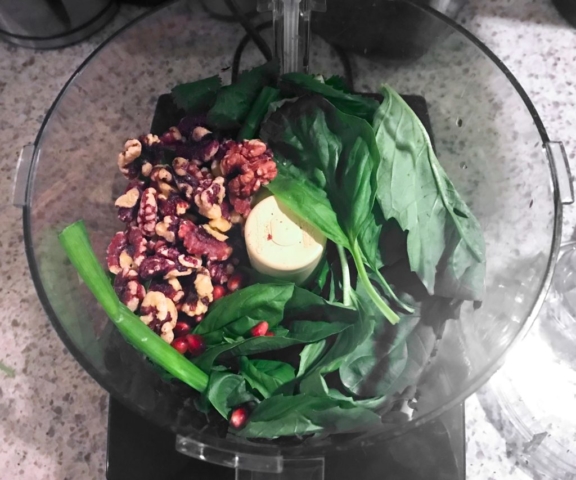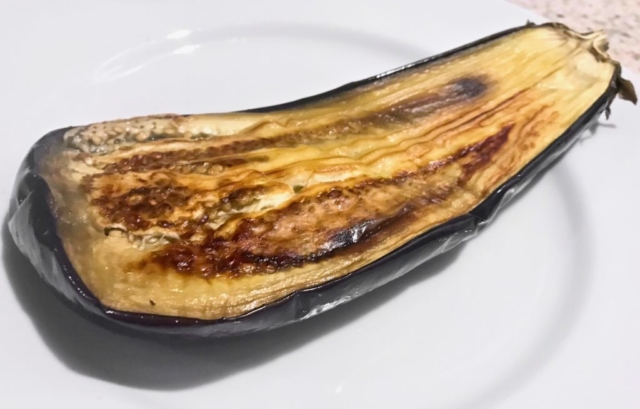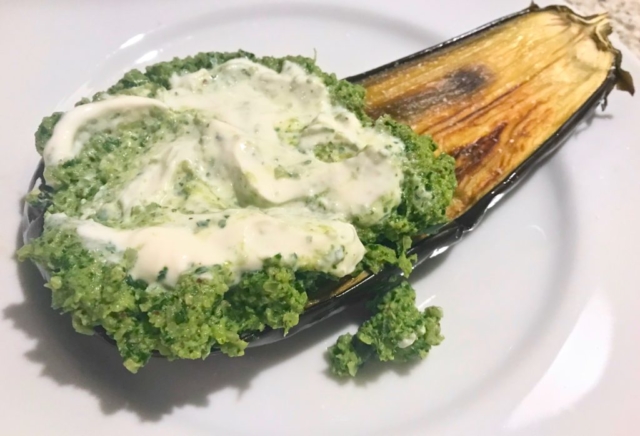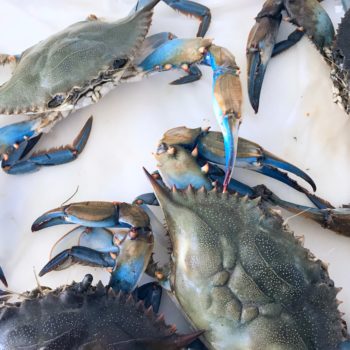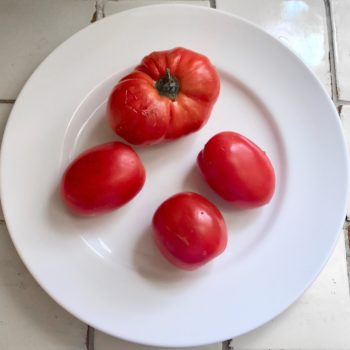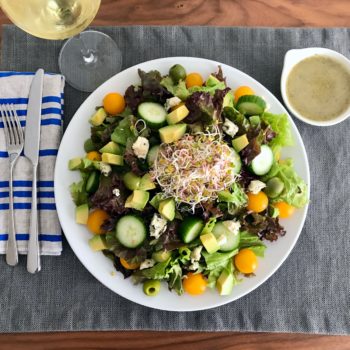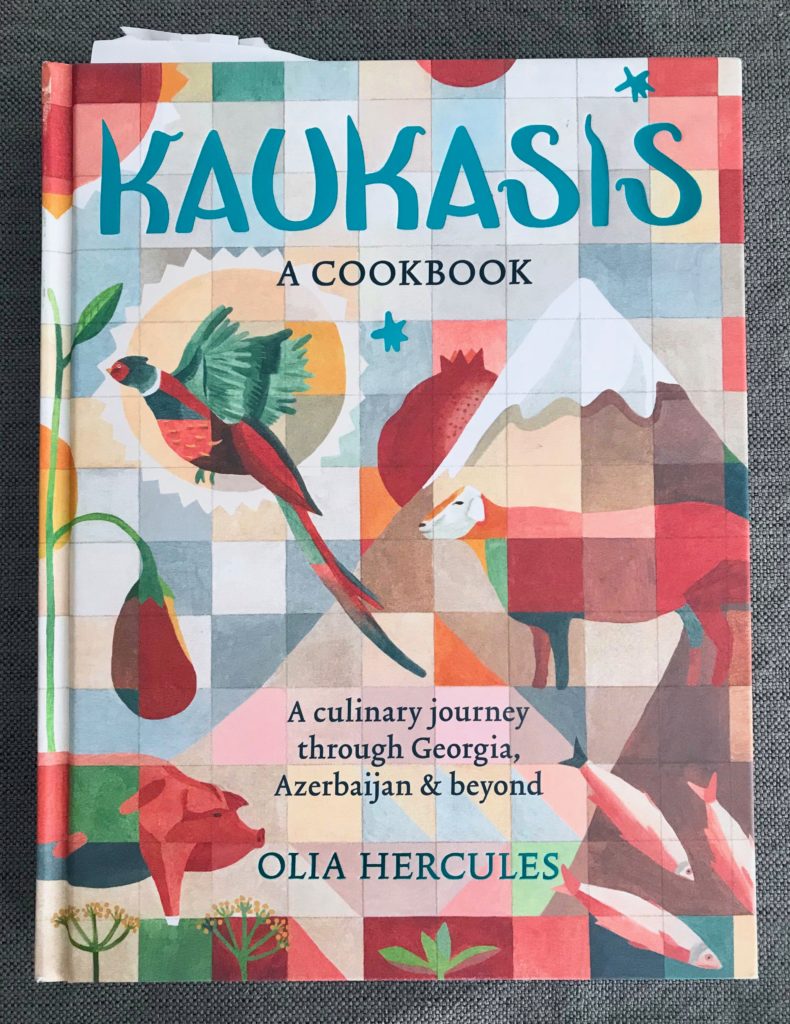
Kaukasis: A Culinary Journey through Georgia, Azerbaijan & Beyond
Olia Hercules
Photographs by Elena Heatherwick, cover by Grace Helmer
2017
Pre-ordered with love from Amazon
Recipes cooked: Chicken chigyrtma (casserole), herb kükü (frittata), badrijani nigvzit (eggplant rolls)
Recipes I want to cook: Ostriy (soup), qata (butter cookies)
Difficulty to make: Remarkably easy—among the very best for instructions
Difficulty to source: Easy to medium
Chicken chigyrtma
If you grew up in rural Virginia in the nineties, like me, you learned a lot about the Civil War and “states’ rights” alongside slavery. My parents were transplants from Massachusetts, with my mom a descendant of an indentured servant on the Mayflower, so we were very Union sympathetic and Civil War apathetic. As such, for a Civil War project in middle school, I constructed a trifold display board with dial-operated lights showing the route of Sherman’s March to the Sea, a horrific bloodbath on wheels that decimated Confederate Georgia from Atlanta to Savannah. I was more interested in perusing my local Radio Shack for the electronic parts and wielding a hot glue gun over cardboard than I was in reconstructing the reality of it all in my mind more than a hundred years later.
Meanwhile, in the present, the Georgian Republic had declared its independence from the Soviet Union, and the USSR was no longer, after almost seventy years of Communist rule and, with it, war, genocide, and famine. Russia continued to court its loyalists in Georgia regardless, culminating in a brief 2008 war and Russia’s continued occupation of two regions in the north. I didn’t know. I didn’t learn anything about the Soviet Union or pretty much anywhere else in the world after 1607, until college or later. I hadn’t even heard of the Armenian Genocide in the same region—1.5 million people, almost three times those lost to our Civil War—until I moved to Los Angeles eight years ago. And Armenia is about the same size as Massachusetts.
“When it’s hard to survive financially, hard to stay strong together, and hard to make sense of history and events, it’s easy to forget what unites us,” writes Ukrainian-born, British-trained chef Olia Hercules in her introduction to Kaukasis: A culinary journey through Georgia, Azerbaijan and beyond. “I was taught from the start (perhaps in rather naive terms, but…) that people and human values are universal. Whether you are Armenian, Azerbaijani, or Georgian, or one of any of the smaller Caucasian peoples, so much of the culture of the region is intertwined and destinies interwoven, and—on a more domestic level—so many cooking techniques and dishes are shared and borrowed.”
I was drawn to Kaukasis because I wanted to learn something—anything—about this geopolitically significant, climatically diverse, and culinarily rich part of the world. Azerbaijan borders the Caspian Sea and cultivates some of the best caviar in the world, while Georgia produces beautiful wines and Armenia prides itself on its brandies. In the US, we don’t tend to make nuts, herbs, or spices the most important ingredients in our food, nor do we favor lamb, fatty cuts of beef, or eggs over other proteins—which made this cookbook so exciting for me.
Herb kükü
When I told my husband about the herb kükü, for example, an Iranian omelet by way of Azerbaijan “(it’s mostly herbs held together by a little egg),” Hercules mentions as an aside, he asked about it almost daily until I made it. I’ve rarely seen him sadder than the morning he forgot I was going to do it and stopped by a coffee chain for breakfast on the way home from the gym, or happier than the morning I finally got to do it.
Remarkably, this cookbook is actually easier to source than many contemporary American cookbooks. Onions, garlic, parsley, cilantro, mint, basil, dill, tarragon, walnuts, goat cheese, eggs, plums, apricots, pomegranate seeds, lemon, turmeric, cumin, cayenne, zucchini, eggplant, radish, green chile, bell pepper, carrots, celery, cauliflower, white fish, chicken, beef, and ground lamb are all available at your local grocery store, I promise. That’s almost the whole cookbook for you. Sumac, saffron, and blue fenugreek are probably the most unfamiliar ingredients you’ll encounter. Sumac is a prominent ingredient in the spice blend za’atar, which is undoubtedly enjoying its sudden notoriety and brings other welcome flavors like sesame and hyssop (often substituted with dried thyme); you can buy it almost anymore. Trader Joe’s, among others
, sells good Spanish saffron that will last you, for a mere six or seven dollars. Blue fenugreek is neither cheaply sold nor easily replaced, so I don’t have to think about what I’m missing by not buying it, and nor should you.
Kaukasis is organized logically, but you’re going to need to go to the index to find, say, a chicken dish, as none of the recipes are listed in one place before that. As a consolation, we are given the gift of great chapter names, like “roots, shoots, leaves and all,” “beasts from land, sea, and air,” “sweet in the tooth.” The best is “pain, be gone!” because, “boy, do they know how to drink in Georgia,” Hercules writes. The chapter contains fermented and pickled produce, herb and meat broths, and eggy, tomatoey breakfasts. She assures us they’re as useful for kids with colds as they are for grown men with hangovers, and I think they’d work on a typical Tuesday night as well.
Badrijani nigvzit, or eggplant rolls
Most recipes have beautiful photos of the final dish on a hand painted platter or gold trimmed porcelain plate or cutting board, set on a floral tablecloth or aged wood tabletop or local newspaper. Recipes for breads, savory pastries, and dumplings have photos of the process, too. I sought out unfamiliarity, though, and I got it—some of the recipes are accompanied by photos of the people Hercules meets, or the mountain range in fog, or a roadside produce stand, or a cow herd blocking a roadway, or no photo at all—leaving me to guess as to what a dish is supposed to look like. But if you’ve tried to take pictures of other regional cuisines that specialize in stews, braises, and what Americans call casseroles, you know that the pictures aren’t always the most informative anyway. Does it really need to be Instagrammable?
You’ll also come to understand that this is a forgiving cuisine, a loving cuisine, a cuisine with as many versions of dishes as there are grandmothers, mothers, and daughters. So, naturally, along the way, you’ll meet friends, relatives, and colleagues, described with love and respect in colorful detail. Hercules really takes you there, and we are the better for it.


